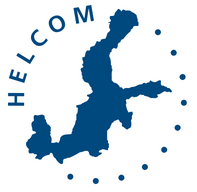HELCOM Hot Spots
Main Pollution Sites
A list of significant pollution sites around the Baltic Sea – HELCOM Hot Spots – was established in 1992. Out of total HELCOM Hot Spots, (%) are active and (%) have been cleaned up by March 2025.
Active HELCOM Hot Spots by site type:
Agriculture: (out of )
Coastal programme: (out of )
Industry: (out of )
Municipality: (out of )
View HELCOM Hot spots dataset in HELCOM Map and Data service.
Hot Spot types
The Baltic Sea Joint Comprehensive Environmental Action Programme (JCP) specifies a series of actions to be undertaken at the polluting Hot Spots around the Baltic Sea drainage basin. The most notorious Hot Spots are point sources such as municipal facilities and industrial plants, but the programme also covers pollution from agricultural areas and rural settlements, and sensitive areas such as coastal lagoons and wetlands where special environmental measures are needed.
Combined Municipal and Industrial Waste Water Treatment
There were originally 53 municipal or municipal/industrial Hot Spots designated in 1992. At some Hot Spots there may be one or more municipal or combined waste water systems, including sewerage networks and treatment plants (existing or planned).
During the Regional Workshops in Poland (2001), it was proposed that certain Hot Spots should be split into several Sub-Hot Spots in order to facilitate their management and actions to reduce the pollution. Subsequently the total number of listed municipal Hot Spots and Sub-Hot Spots has risen to 75.
Industrial Hot Spots
Although significant progress has been made at industrial Hot Spots, continued and substantial support will be required to reach the targets of the programme. Originally 50 industrial Hot Spots were identified by the The Baltic Sea Joint Comprehensive Environmental Action Programme (JCP).
Additionally, many industries are connected to municipal sewerage systems listed as municipal Hot Spots. Out of the 50 industrial Hot Spots, 37 were located in the countries in transition, including 9 classified as “priority Hot Spots”. At least three pulp and paper mills and two food processing plants have been closed in these countries, and production has decreased at several other plants as well.
Certain industrial Hot Spots have been split into Sub-Hot Spots, as was the case for some municipal Hot Spots, in order to facilitate their management and actions to reduce pollution.
Agriculture
Large areas of the Baltic Sea catchment area have been identified as agricultural Hot Spots. The list established in 1992 contained 17 agricultural Hot Spots. The list also contains five coastal lagoon/wetlands Hot Spots which are influenced by agricultural activities and where relevant management programmes are needed. Out of these 22 Hot Spots, 13 are located in the former countries of transition.
How were Hot Spots chosen?
The 132 original environmental Hot Spots were designated in 1992 by an international group of scientists, engineers, environmental managers, bankers and national representatives, according to practical economic considerations as well as the seriousness of their impact on the environment and human health.
Later on, more have been added, with a grand total of 162 Hot Spots.
Water quality in many coastal waters of the Baltic Sea has improved considerably since 1992, reflecting progress in the treatment of municipal and industrial wastewater.
Read more about the criteria for the inclusion or removal of hot spots
Early work on Hot Spots
The Baltic Sea Joint Comprehensive Environmental Action Programme (JCP) – the international environmental management framework for the long-term restoration of the ecological balance of the Baltic Sea – was implemented in 1992-2013.
The Programme Implementation Task Force (PITF) coordinated the implementation of the JCP during the last years. PITF consisted of representatives from the European Union and every country in the Baltic Sea drainage basin, as well as international financing institutions, governmental and non-governmental organisations. Focus was on the investments made to reduce pollution from a variety of sources, including serious pollution Hot Spots designated by HELCOM, and on the drafting of management plans for sensitive coastal lagoons and wetlands.
Final report on the implementation of the Hot Spot programme (2013)
A Finnish report presents a comprehensive review of the environmental and economical progress at the industrial Hot Spots in the Baltic Sea catchment area during 1991-1998. The report includes a review on industrial Hot Spots based on data compiled from available sources by SYKE during the summer of year 2000.
